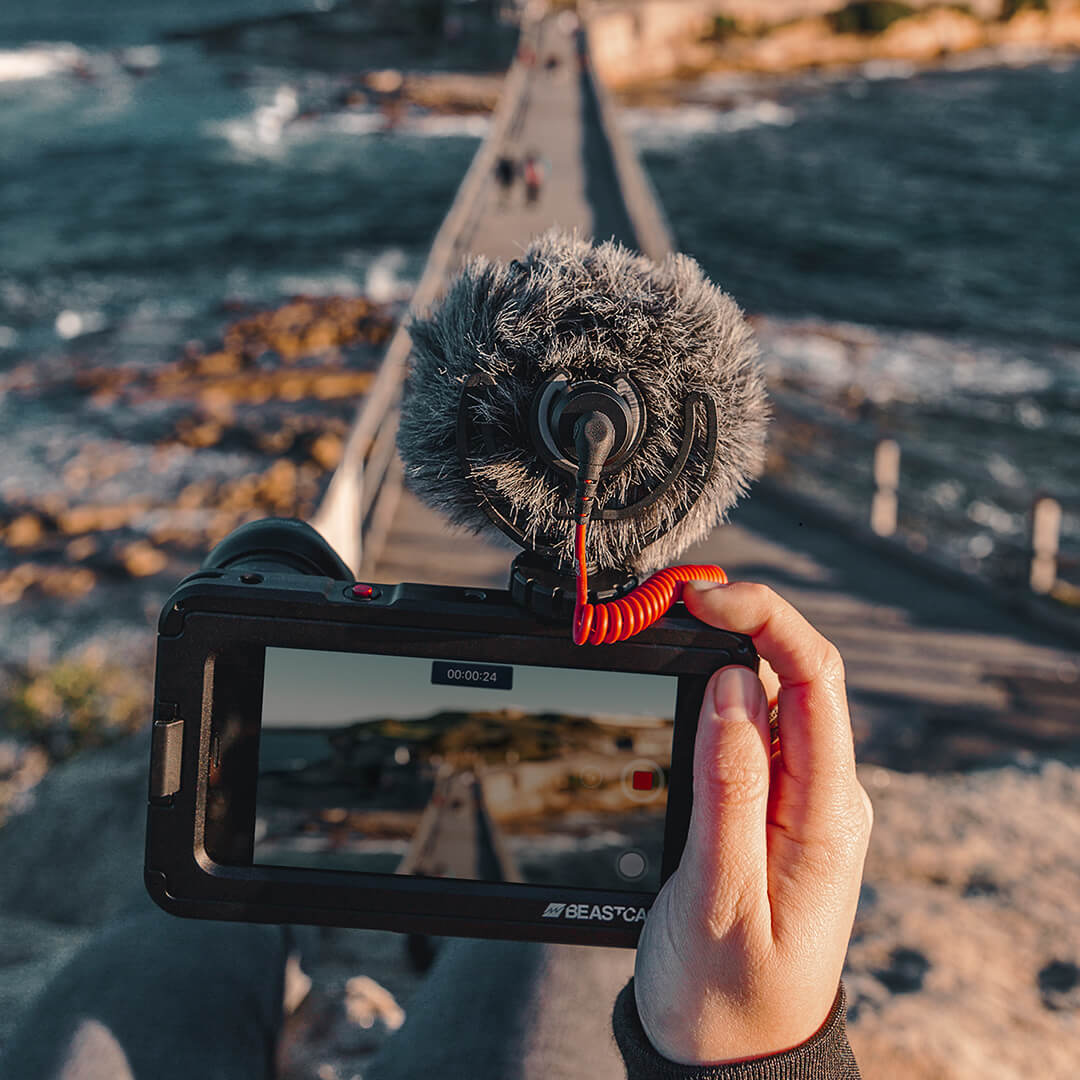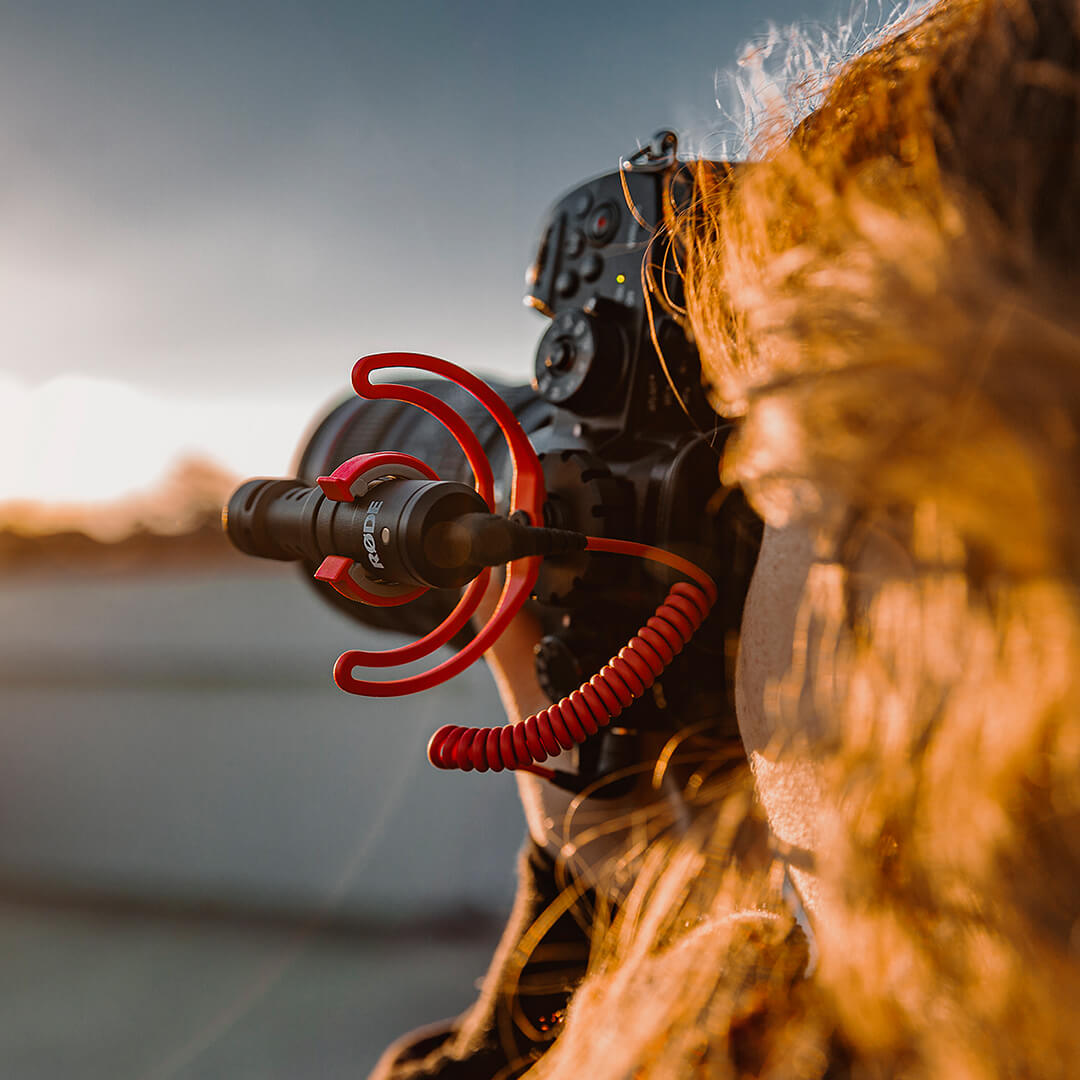VideoMicro
Kompaktes Kamera-Mikrofon
Das VideoMicro ist ein hochwertiges Kamera-Mikrofon, ideal für Vlogging und Filmemachen. Ultra-kompakt und leicht, ist es das perfekte Mikrofon, um unglaublichen Ton aufzunehmen, der inspirierende Bilder begleitet.
Hauptmerkmale:
- Hochwertiges Kamera-Kondensatormikrofon
- Kompakt und leicht (nur 42g)
- Ideal für den Einsatz mit Kompaktkameras, Action-Kameras und DSLRs
- Integrierte Rycote® Lyre® Stoßdämpfung für überlegene Isolation von Handhabungsgeräuschen
- Deluxe Fell-Windschutz für Außenaufnahmen
- Super einfach zu bedienen, keine Batterie erforderlich
- Hochwertiges Kondensatormikrofon für die Kamera
- Kompakt und leicht (nur 42g)
- Ideal für den Einsatz mit Kompaktkameras, Action-Kameras und DSLRs
- Integrierte Rycote® Lyre® Stoßdämpfung für hervorragende Isolierung von Handhabungsgeräuschen
- Deluxe Fell-Windschutz für Aufnahmen im Freien
- Sehr einfach zu bedienen, keine Batterie erforderlich
Verbessern Sie Ihr Audio
Die Verwendung eines hochwertigen externen Mikrofons ist der einfachste Weg, um den Ton Ihrer Kamera erheblich zu verbessern. Mit seiner hochwertigen Kondensatorkapsel und dem Nierencharakteristik-Muster liefert das VideoMicro klaren, natürlichen Klang, der ideal für Vlogging und spontane Filmaufnahmen ist.

Kompakte Vielseitigkeit
Der VideoMicro ist ultrakompakt und wiegt nur 42 g, was ihn perfekt für den Einsatz mit kleineren Kameras sowie Smartphones und anderen mobilen Geräten macht (zusätzliches SC7-Kabel erforderlich). Er überzeugt auch bei der Verwendung an einer Tonangel und mit seiner hochwertigen Keramikbeschichtung und dem luxuriösen Fellwindschutz ist er ideal für den Einsatz im Freien in verschiedenen Filmszenarien, was den VideoMicro zu einem äußerst vielseitigen kompakten Mikrofon macht.

Technische Daten
Häufig gestellte Fragen
The VideoMicro is extremely user-friendly as there's no switches or battery to worry about - just plug in and go. All microphones need power however, and in the case of the VideoMicro it is drawing a very small voltage commonly referred to as "plug-in power" from your camera (or recording device) via the audio cable.
Plug-in power has long been a standard for camera manufacturers, and so the VideoMicro is compatible with the vast majority of cameras in the market.
The following cameras unfortunately do not support the VideoMicro:
- Nikon D7000
- Canon T3/1100D
- Canon C100, C300, C500
- Canon VIXIA HFR500
- Canon VIXIA HFG20, HFG30
- Canon XA-10
- Canon Vixia G10
- Canon Legria HF G25
If you are experiencing issues getting your VideoMicro to operate with a camera not listed above, firstly be sure to update your camera's firmware to the latest version (available from your camera manufacturer's website). If you are still experiencing issues please get in touch with us via our support page.
The RØDE cold shoe adaptor is a standard size adaptor, also known as a universal shoe mount. This standard shoe is suitable for the majority of camera attachments.
If your camera has a different, or custom adaptor, please contact your camera manufacturer for information on converters to fit the universal shoe connection.
Yes, all of our microphones in the VideoMic range have a standard 3/8 thread built into the bottom of the cold shoe mount for connection to a boompole, mic stand or tripod.
This is usually caused by the function of "Automatic Gain Control" or "AGC" on the camera.
Basically, when the camera cannot sense an audio input signal, it automatically increases the gain of the input. It is increased so much that the noise floor in the camera microphone amplifier becomes audible.
The AGC can be disabled on some cameras and it is worth checking with you camera manufacturer for information on this, which can sometimes require a firmware update to the camera.
RØDE have created the VideoMic Pro to help combat this issue, the VideoMic Pro contains a 20dB pre amplifier, boosting the mic signal so that the camera will see a good signal level and not engage its AGC.
We recommend setting your audio levels manually to achieve an optimum signal to noise ratio and disabling the AGC of the camera.




